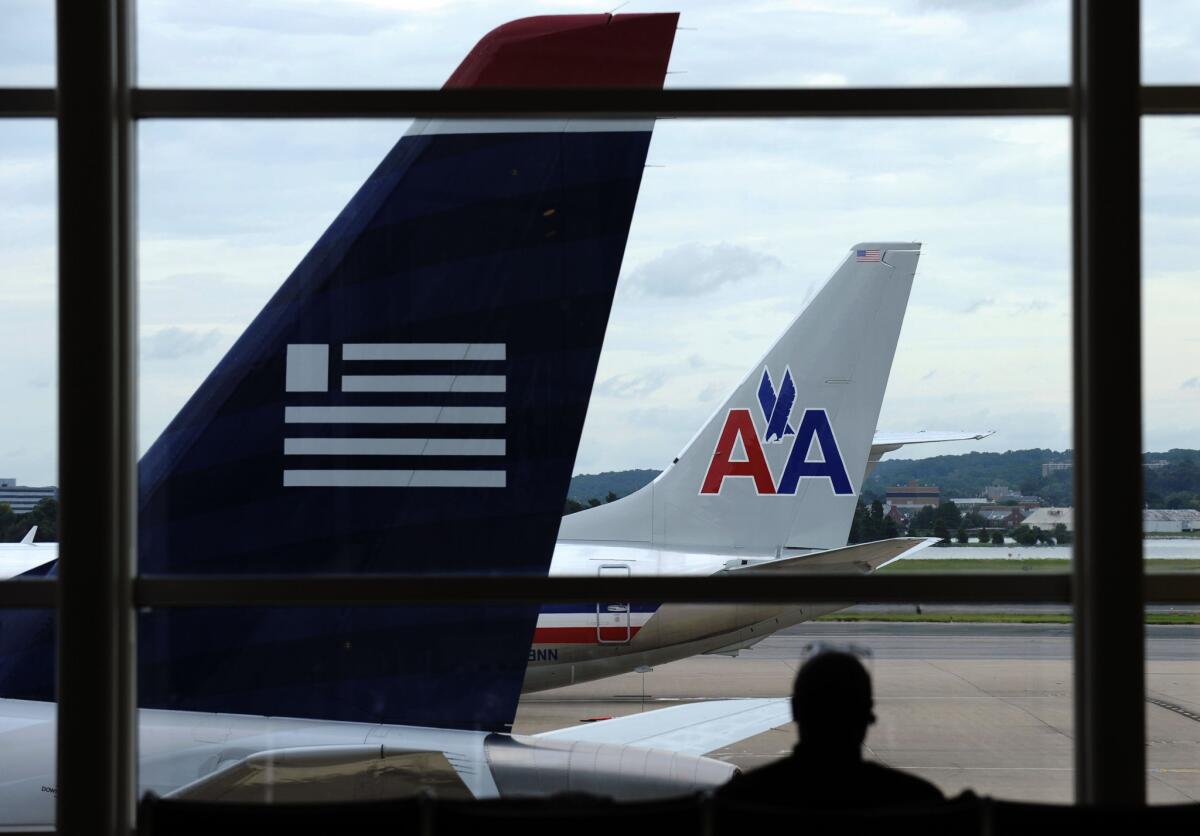Grounding the American-US Airways merger

- Share via
The best illustration of the virtues of deregulation may be the U.S. airline industry, which Congress liberated from most nonsafety-related rules in 1978. The cost of flying plummeted as a host of new players entered the business to compete with the major national airlines.
But as anyone stuck in coach class will tell you, flying isn’t much fun anymore. Airlines cram more people onto planes that offer less legroom. Conveniences that used to be included in the standard ticket price now carry extra fees. And when passengers are stranded by bad weather or mechanical problems, they may be forced to wait hours to find space on later flights that are routinely overbooked.
Such problems could conceivably be solved if competition forced the airlines to pay more attention to customer service. But competitive forces in the industry are weakening, not growing stronger. Despite the lower government barriers to entry, airlines have consolidated dramatically over the last two decades, narrowing consumers’ choices and pushing ticket prices back up. There were nine major national airlines as recently as 2005, but only five remain.
That’s why it was good to see the U.S. Department of Justice and several state attorneys general file suit Tuesday to try to stop two of the five — American Airlines and US Airways — from combining into the world’s largest carrier. The lawsuit alleges that consolidation makes it easier for airlines to “raise prices, impose new or higher baggage and other ancillary fees, and reduce capacity and service.” And in this case, it contends, the merger would reduce competition to an impermissibly low level on more than 1,000 routes.
Supporters of the merger note that the industry’s challenging economics have driven more than 40 U.S. airlines into bankruptcy since the late 1980s, American being the latest major one. Yet as American executives made clear, they declared bankruptcy because they wanted to cut costs and improve their competitive position, not because they needed a partner to survive. If American combines with US Airways, the revitalized competitor that the bankruptcy process was supposed to create will simply be absorbed into a company that was already profitable.
The main concern of the bankruptcy judge is how to protect American’s creditors, such as its suppliers and employees. Those creditors would be well served if the airline faced less competition; what’s good for consumers is practically an afterthought in the bankruptcy process. By intervening, the Justice Department and the state attorneys general have put the merger’s effects on consumers front and center. It’s a welcome upgrade for fliers in the back of the plane.
More to Read
A cure for the common opinion
Get thought-provoking perspectives with our weekly newsletter.
You may occasionally receive promotional content from the Los Angeles Times.









